Digital
Gladeye 55 Social Mobility in the Digital Age
-
Pou Auaha / Creative Director
Gladeye
-
Kaitautoko / Contributor
Victor Antonelli -
Client
L'Atelier BNP Paribas
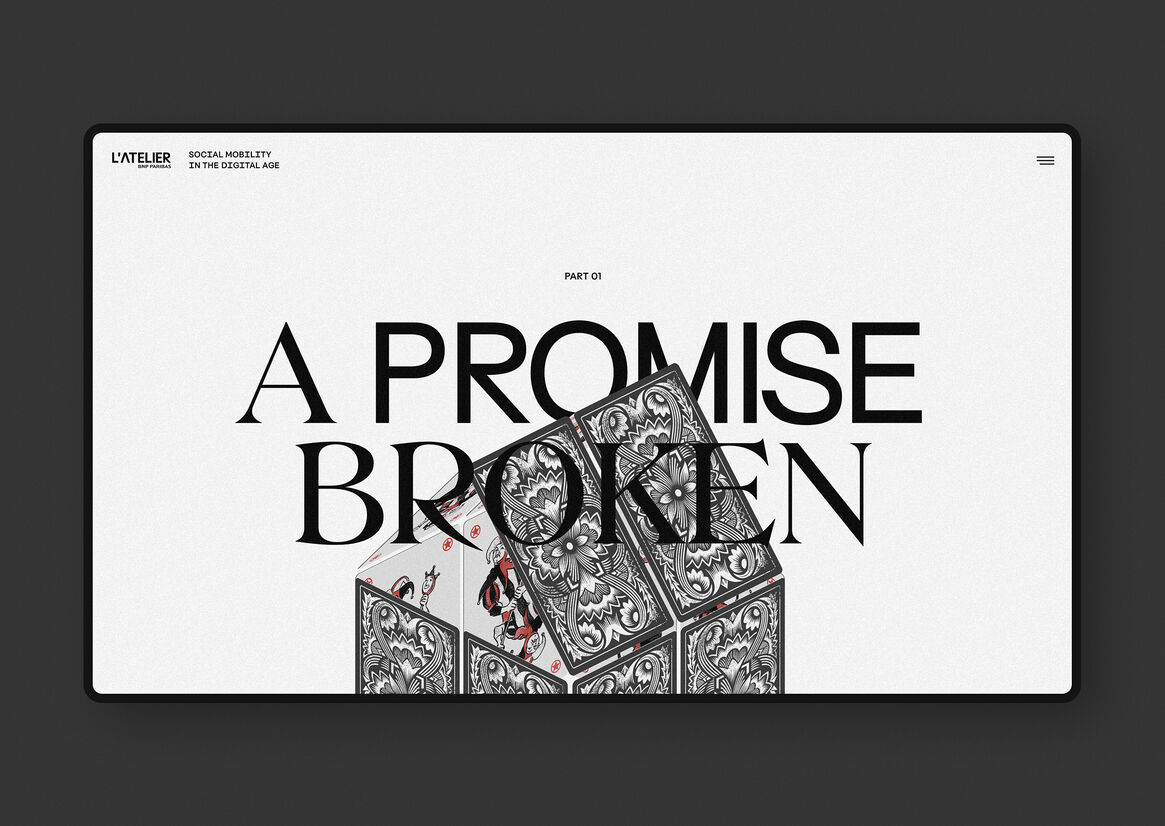
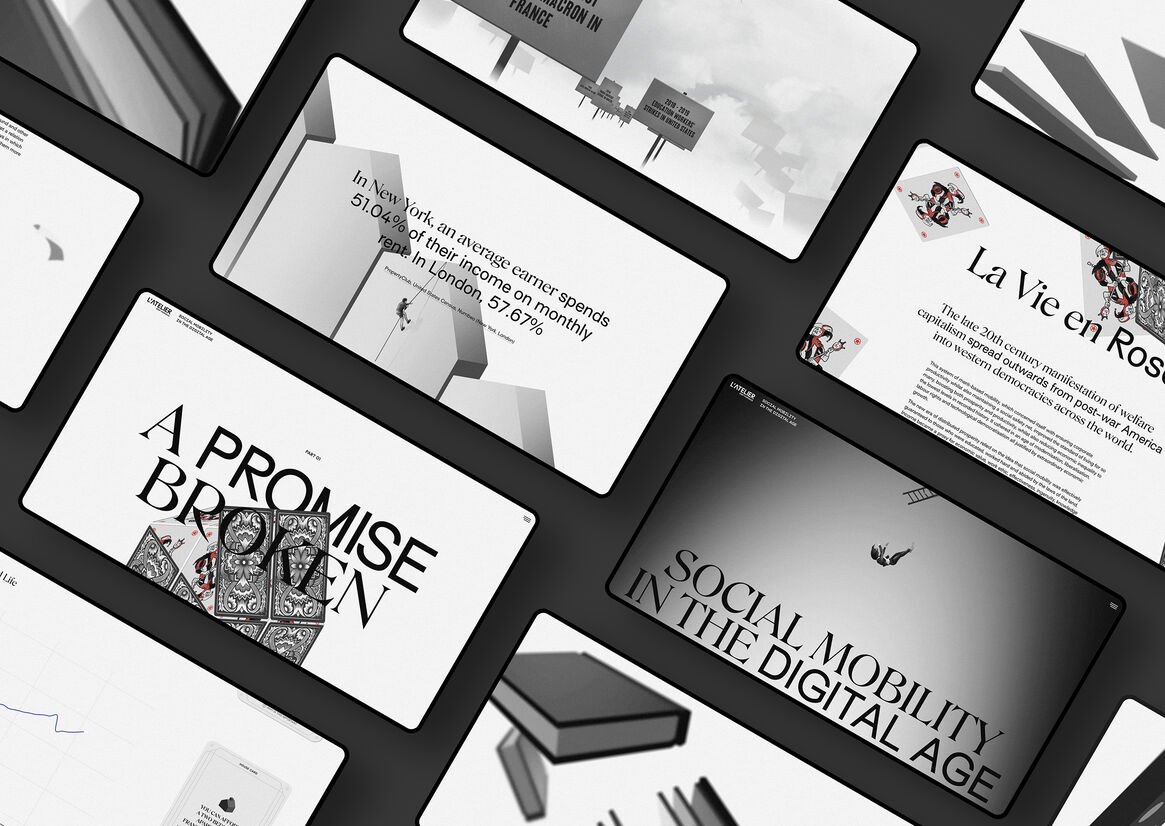
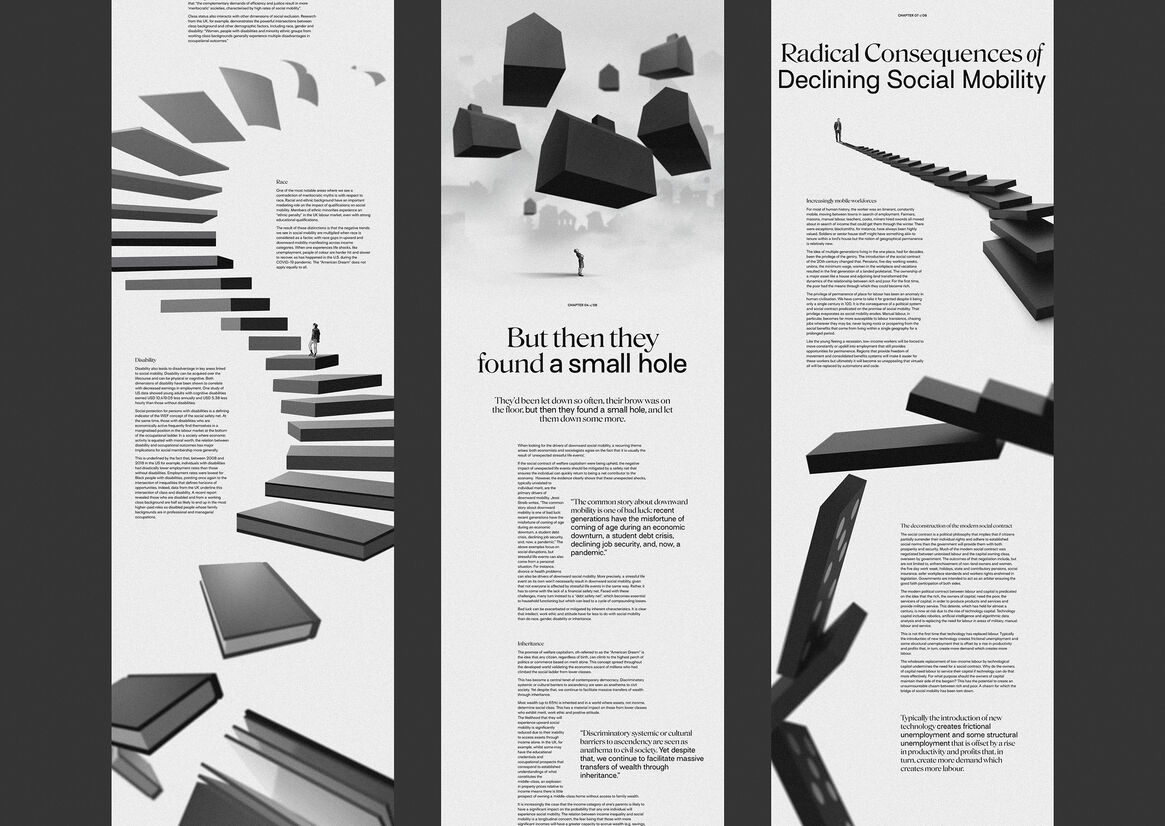
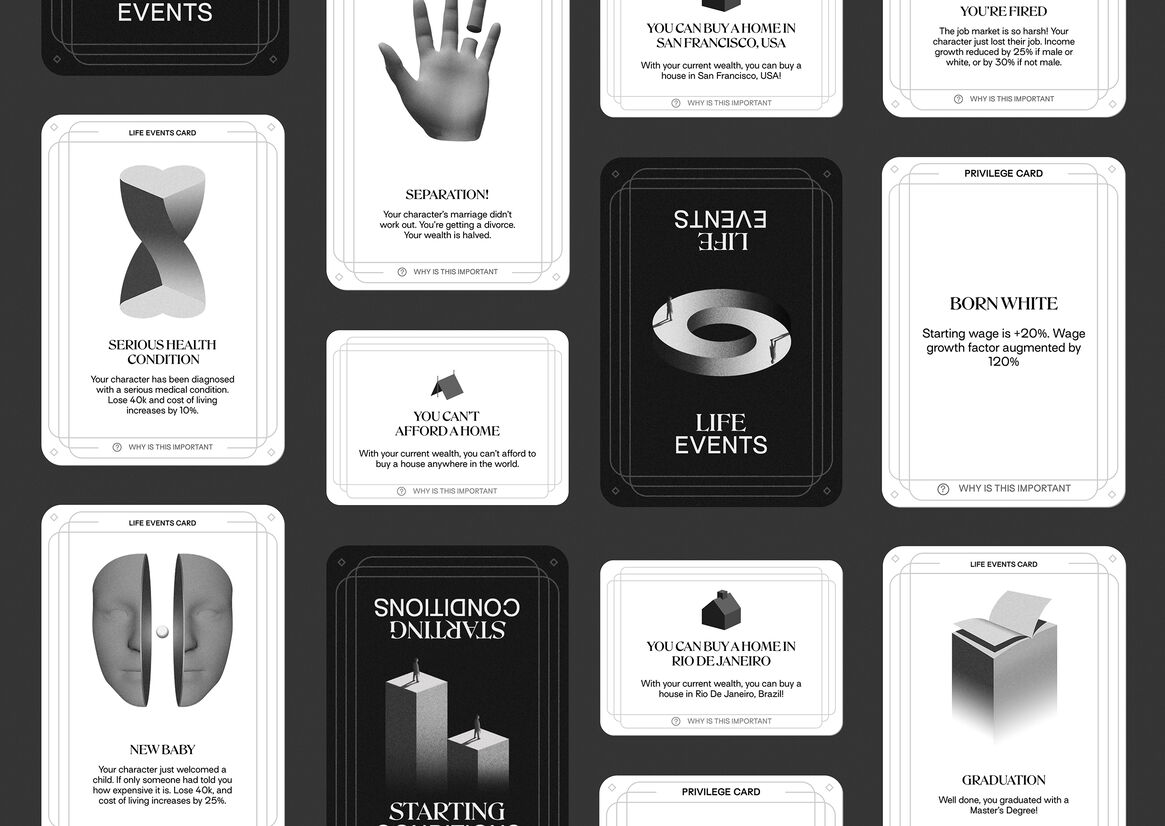
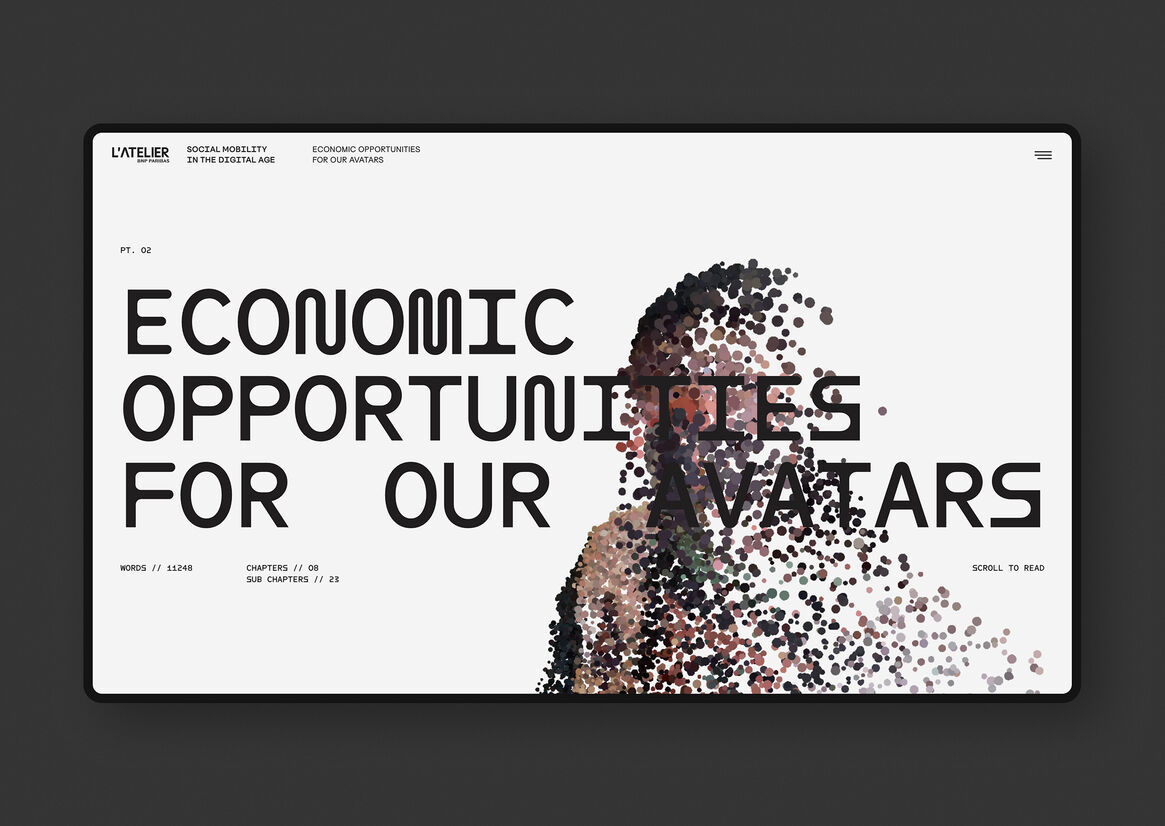
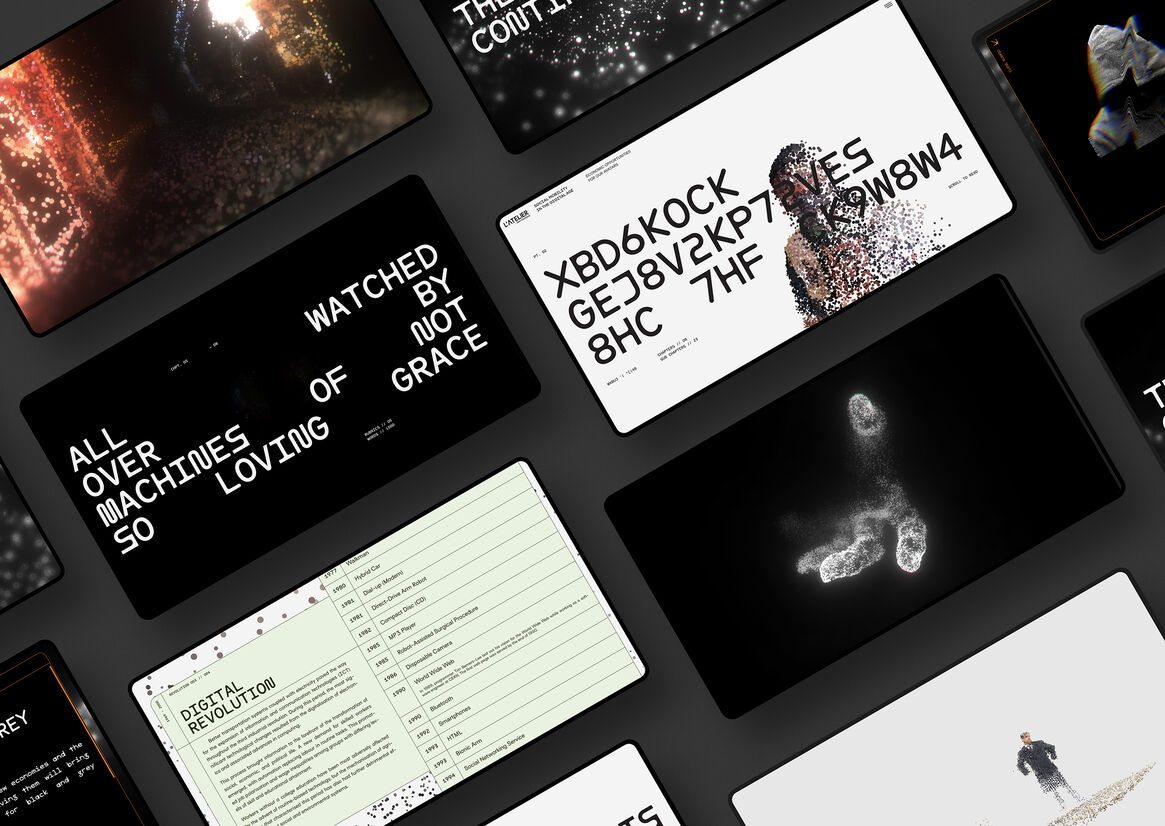
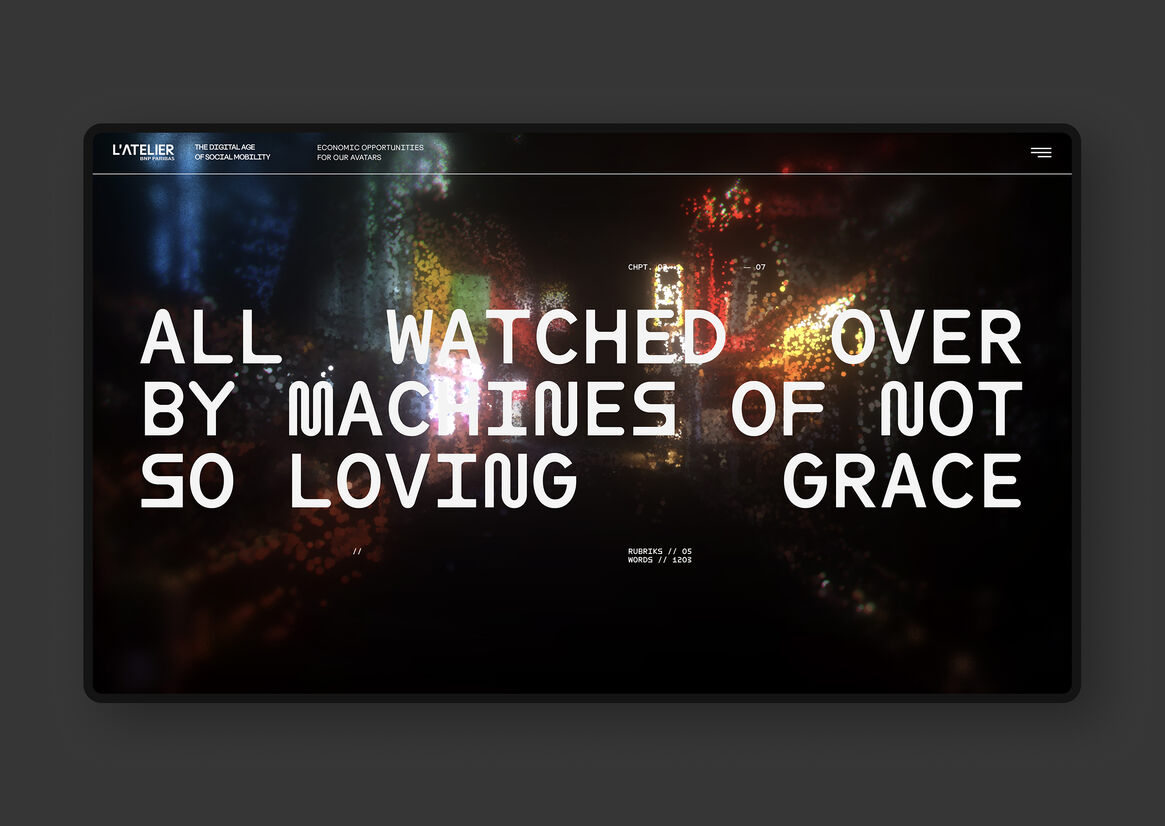
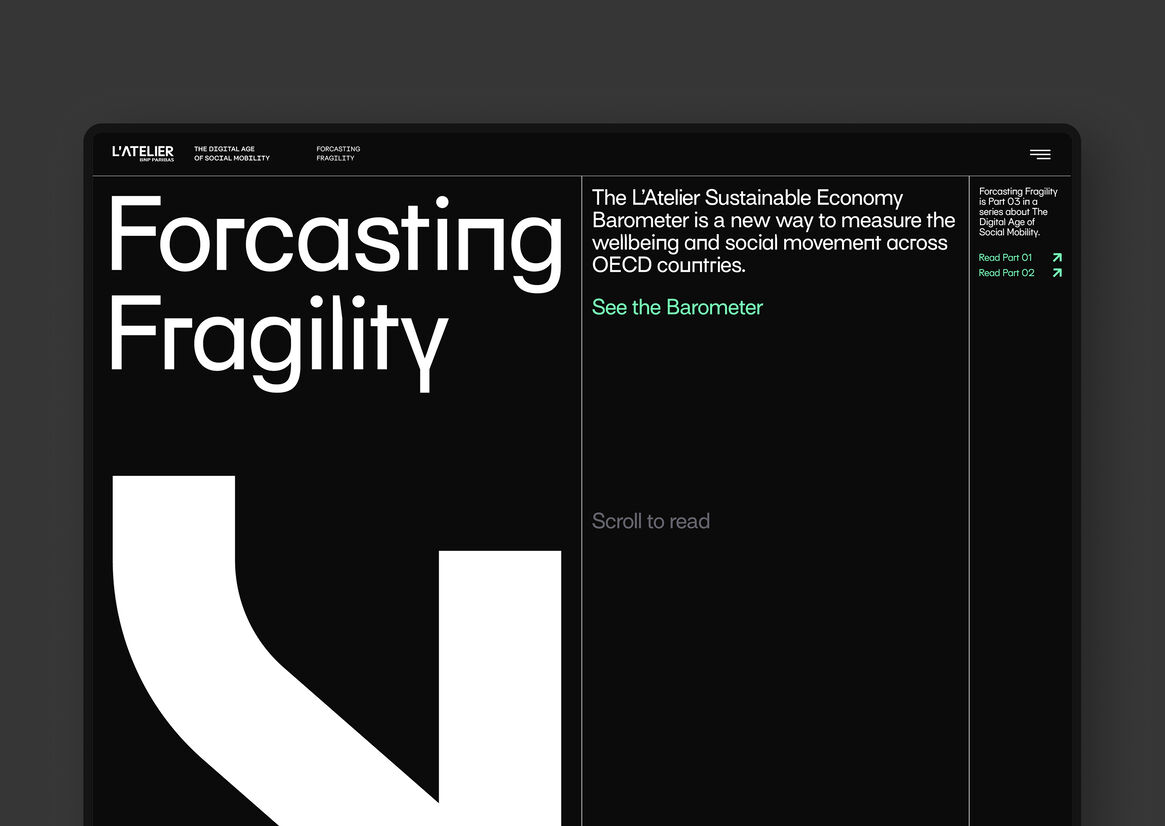

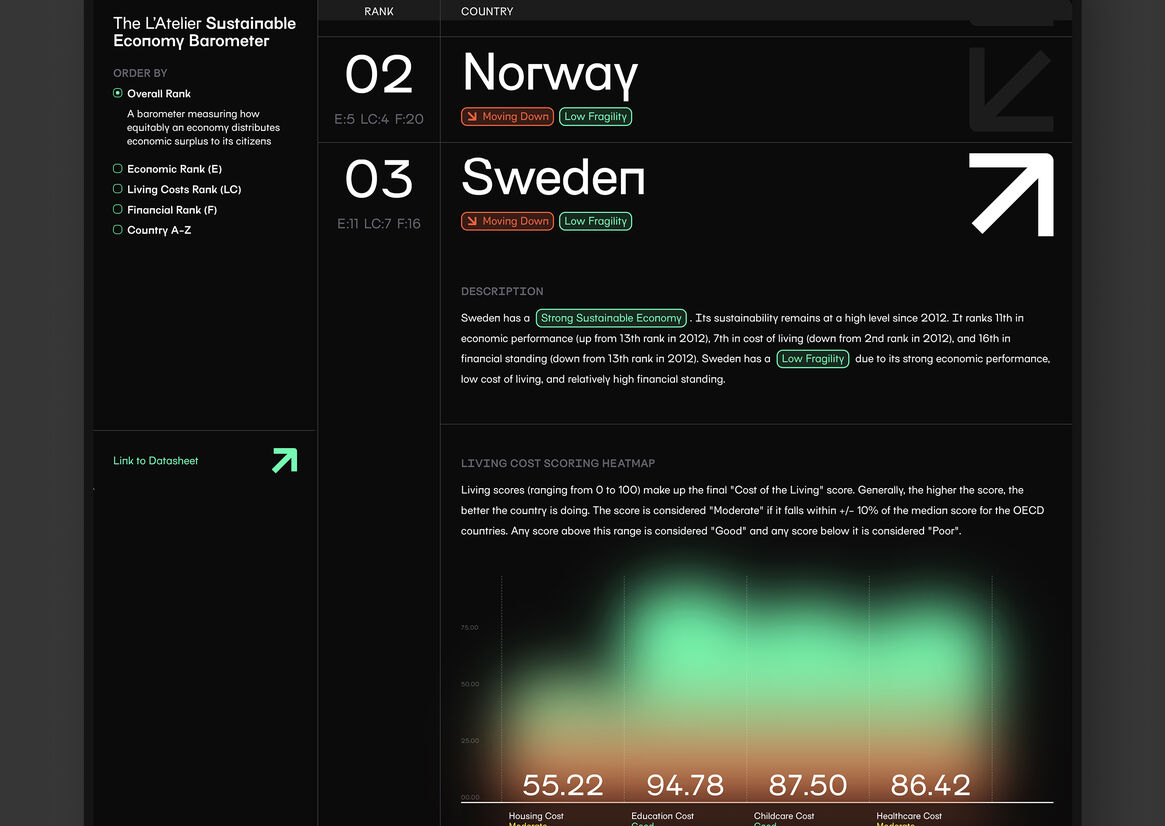
Description:
‘Social Mobility in the Digital Age’ is the culmination of a year-long research project by Paris-based agency, L’Atelier. Told in three acts, ‘Social Mobility’ explores historical drivers of wealth inequality, the potential impact of future technologies on economic society, and comparative metrics for understanding present day threats on a global scale. The design needed to bring this scholarly text to life, and add emotional weight to the experience.
Act I: ‘A Promise Broken’ is illustrated allegorically. In keeping with themes of technology-meets-humanity, this chapter combines textured hand-drawn characters and scenes with sophisticated scroll-driven animation in CSS and WebGL. The central allegory is The Game of Life, where chance plays a key role; from a house of cards that shatters and falls down the title page, to giant dominoes that topple on the reader at the chapter’s conclusion.
Humans are rendered as tiny, helpless individuals in a world of massive economic forces they cannot control. A bar chart representing social classes expands into a towering edifice that workers struggle to cling to. A person climbs a white picket fence like an impenetrable cliff face. The vulnerable are almost crushed by towering dice of chance.
The anchor experience of Act I is a programmatic Game of Life developed specifically for the project. A demonstration of how chance of birth and life events impact an individual’s earning potential, the game uses real research data to generate a life that unfolds as the user scrolls (Scroll-driven interaction was deliberately chosen for intuitive accessibility). Each experience generates a different story.
Act II: ‘Economic Opportunities for Our Avatars’ explores the outrageous possibilities of future technologies and their impact on human economic potential. The design style evokes a possible future coming into focus but not quite defined. LiDAR is a technique to scan physical objects and create 3D models from life. The effect is ephemeral, half formed, like ghosts of the future. The design team scanned human models in motion (using an iPhone LiDAR scanner) then placed them in 3D scenes to stand for the range of human experience and the staircase of economic ascendence.
Act III: ‘Forecasting Fragility’, is the heart of the research story. Analysts brought together sources of economic and social data to develop their own original social mobility score. The challenge was to visualise this information in a way that wouldn’t overwhelm the reader with complexity, but made methodology accessible and clear. Importantly, a global audience needed to be able to compare and contrast their own country’s performance with the rest of the world.
Illustrating Act III are simple, flat shapes that reference the variety of models and data input into this analysis. Simple icons show at-a-glance movements in scores over time, and a beautiful gradient method for data visualisation suggests energy, movement and the increasing “temperature” in risk of social upheaval.
Judge's comments:
This is digital storytelling at its best. This project takes a lot of information and brings it to life in unexpected and engaging ways that are creative, accessible and easy to follow. The original style is very cohesive and executed immaculately throughout. Such a pleasure to explore.